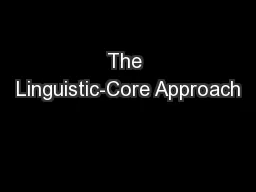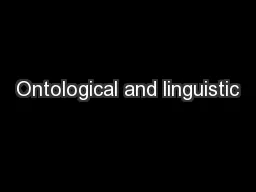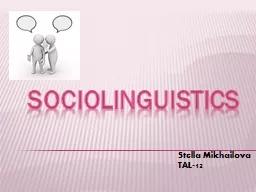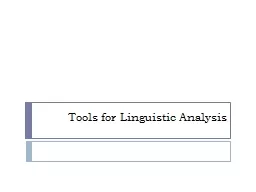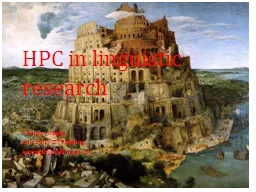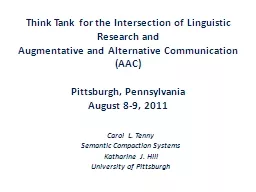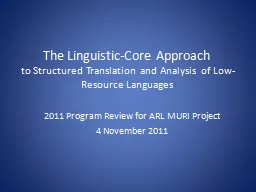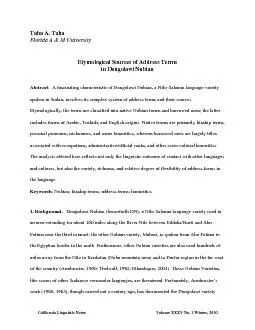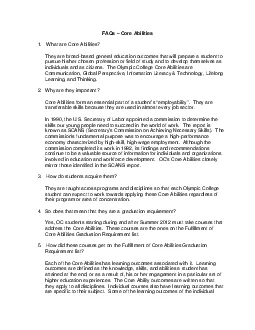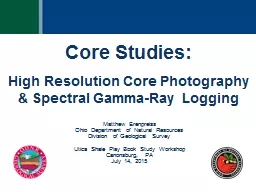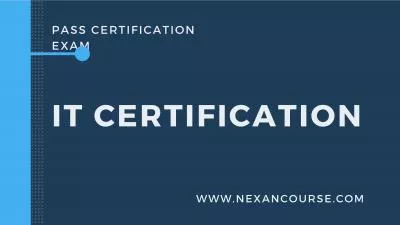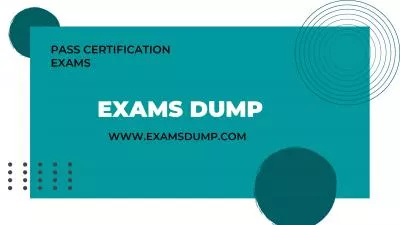PPT-The Linguistic-Core Approach
Author : pasty-toler | Published Date : 2018-02-27
to Structured Translation and Analysis of LowResource Languages November 2014 Project Review at ARL Jaime Carbonell CMU amp Team MURI via ARO PM Joseph Myers
Presentation Embed Code
Download Presentation
Download Presentation The PPT/PDF document "The Linguistic-Core Approach" is the property of its rightful owner. Permission is granted to download and print the materials on this website for personal, non-commercial use only, and to display it on your personal computer provided you do not modify the materials and that you retain all copyright notices contained in the materials. By downloading content from our website, you accept the terms of this agreement.
The Linguistic-Core Approach: Transcript
Download Rules Of Document
"The Linguistic-Core Approach"The content belongs to its owner. You may download and print it for personal use, without modification, and keep all copyright notices. By downloading, you agree to these terms.
Related Documents

